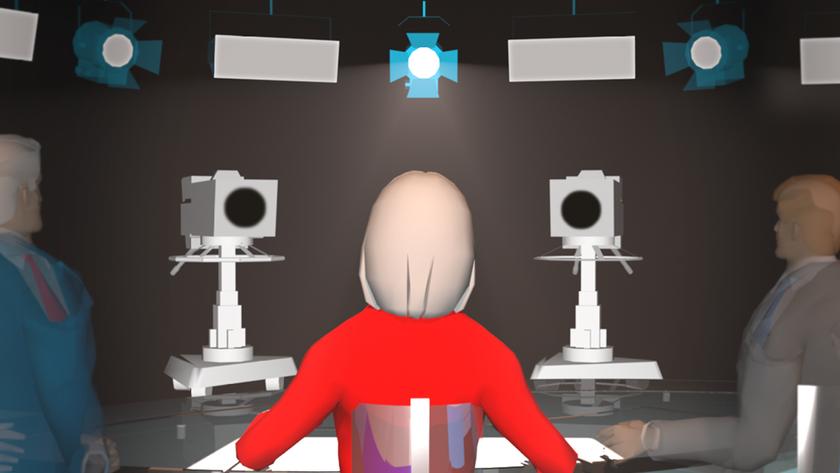Branding ACE
Creating lasting impressions in a multichannel universe
JOHNSTON, IOWA: At IPTV, we are currently knee deep in the installation of the PBS ACE master controls system. In previous articles I have explained the overall concept of the system and what we expect it to do. I would love to be able to present some definitive examples of how well it is working but at this time, the system is still in the process of being configured.
One key area that I did not want to scrimp on was the branding element. Since our operational plan calls for a four channel multicast during a portion of the day and an HD broadcast during portions of the day, branding five channels requires a significant investment in hardware. Our ACE system includes five Miranda Imagestore 2s (N+1) and one Miranda Imagestore HD. All five of the SD units have the optional MEM-4000V memory upgrades that increase the capacity of the units from the standard 40 full frame images and three-quarter-second full frame animation to 4,000 full-frame images and 6 seconds of full-frame animation. The HD unit has the optional MEM-HD-1000V that increases the capacity from 40 full-frame stills and about one quarter of a second of full frame animation to 1,000 full frames and 1.1 seconds of animation. All of the units include the appropriate optional A/B mixer to increase the flexibility that will improve the look of the brandings as they are used on air.
STAYING FRESH
The tightly integrated concept of the ACE system blends the operation of these branding systems into the Omnibus automation system under the direction of the Broadview traffic system. By scaling the storage capacity of the units as large as we have, we present a significant quantity of images that can be keyed over programming or inserted between programming to add a dynamic and varied look to. The idea is to insure that the viewer knows that they are watching IPTV without the look becoming stale. In our operation we want our viewers to first recognize us as Iowa Public Television and then PBS to maintain that local connection that is often missing or obscured in the multichannel world we now live in. It is critical for the health and growth of our stations that our viewers know that there is a significant difference between us and a direct feed from PBS. The primary way we do this is by creating and tailoring local content to meet the needs of our viewers, but branding is critical to insure that the message is consistent across the full spectrum of content that we air.
The graphics and animations that are used by the Imagestores can come from any PC- or Mac-based system. All of our Imagestores include the Ethernet option that facilitates drag and drop importation from the graphic system or one of the other Imagestores. The file formats are pretty much the usual suspects for the still images and, of course, the Imagestores allow for adjustment of the size, placement, transparency and other characteristics of the image.
One of the hitches that developed as our system was being built and configured at AF Associates was the limitation of our Sage EAS system. In our current single channel environment we have our EAS decoder configured to store some messages like a "weather watch" to play out at a convenient time and other items such as an Amber Alert to go immediately. In the multichannel world we want to maintain that flexibility and unfortunately, the Sage unit could not accommodate a single message being stored and played out at different times over different channels. We had to purchase a TFT-911 with serial port option as well as the optional status/remote control module. Not a particularly tremendous expense in the scope of the project, but it was still an unplanned addition.
TOO MUCH OF A GOOD THING?
The one feature of the Imagestores that I have mixed feelings about is the animation capability. Earlier I mentioned that the SD unit has the capacity for 6 seconds of full frame animation and the HD unit can do 1.1 seconds of full frame; that is merely a benchmark for comparison. The actual animation capacity of the unit is also a function of the screen size of the animation. According to the specification, an animation that is 1/64 of the full frame on the SD increases the capacity to 6 minutes and on the HD to 68 seconds. Our promotion folks are thrilled with this concept of course, because it will provide them with the ability to create more dynamic and compelling supers and keys, (I have heard them referred to as "pop-ups"). I have seen them on a number of channels like Spike TV where they frequently are so large, last so long and are so distracting that they disrupt the viewing experience. I am sure that our folks will use good judgment and restraint in the creation and implementation of animations.
One question that I have yet to have answered regarding the capabilities of our networked Imagestores is in regards to their capacity as a network. It didn't dawn on me until after we had placed the order; can each unit operate as an island or can their capacities be aggregated across the network? If the latter is the case, we have just created a still library with a capacity of 20,000 stills. If that is indeed the case, than I suspect that we'll have some time before we run out of space.
Overall, my impression of the Imagestore is that it will provide a good vehicle for allowing IPTV to effectively brand our SD and HD feeds. Its integration into the ACE network will permit complex combinations of branding and animation over content that will help our audience recognize that they are watching IPTV and although we are happy to air content from PBS, their connection is with us directly.
Get the TV Tech Newsletter
The professional video industry's #1 source for news, trends and product and tech information. Sign up below.
Bill Hayes is the former director of engineering and technology for Iowa PBS and has been at the forefront of broadcast TV technology for more than 40 years. He’s a former president of IEEE’s Broadcast Technology Society, is a Partnership Board Member of the International Broadcasting Convention (IBC) and has contributed extensively to SMPTE and ATSC. He is a recipient of Future's 2021 Tech Leadership Award and SMPTE Fellow.











